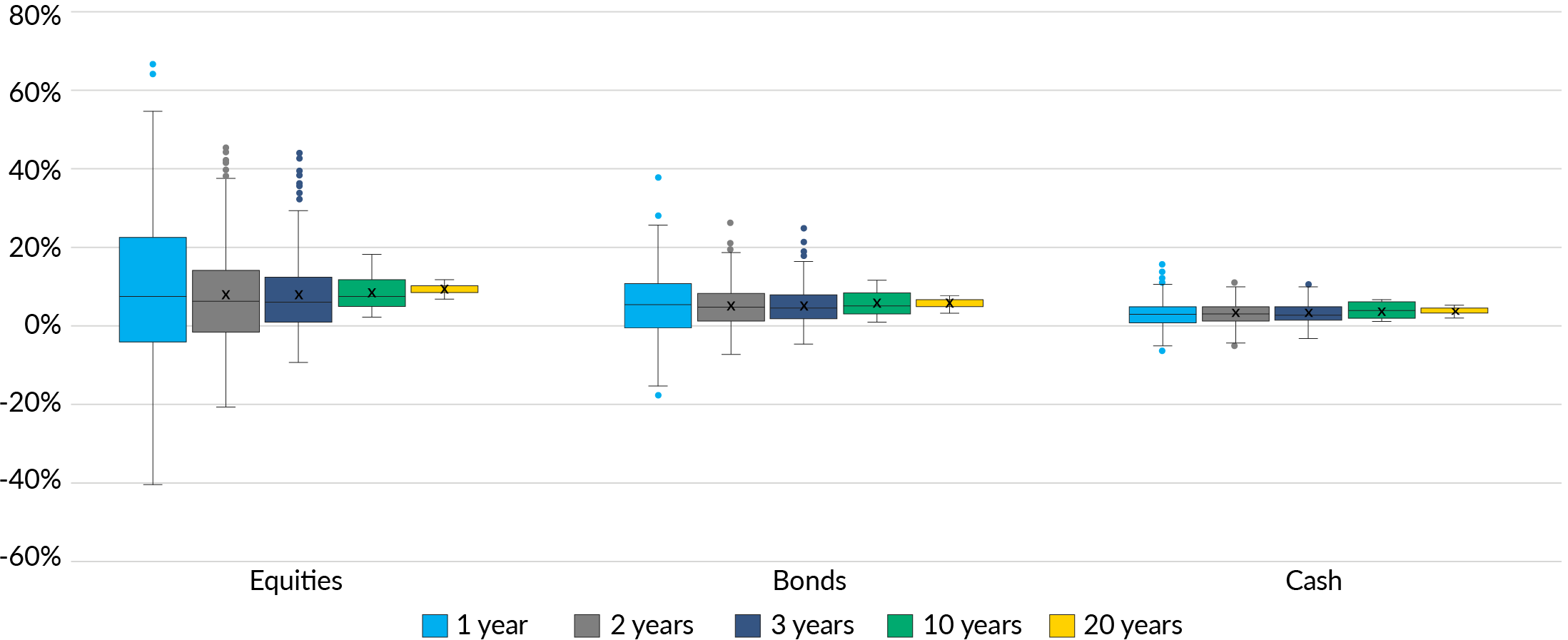12
December 2023
Things You Can Do Today to Prepare for Retirement Tomorrow

Adriaan Pask, Chief Investment Officer
PSG Wealth
The rise in life expectancy poses a significant challenge for individuals planning for retirement, necessitating a shift in the approach to financial preparedness. As people live longer, the duration of retirement increases, and with it, the financial demands. Longer lifespans imply more years of healthcare expenses, potential long-term care needs, and sustained financial support during retirement. To ensure a comfortable and secure lifestyle during retirement, individuals must be diligent and strategic in how they save.

“ While equities are often misunderstood and very volatile over the short term, exposure to this asset class is crucial to grow your retirement pot in excess of inflation. ”
The goal of retirement savings is to generate long-term real returns
Saving for retirement is fundamentally a long-term financial strategy, and its success hinges on the ability to generate real returns over time. Generating real returns (or returns adjusted for inflation) ensures that the purchasing power of savings is preserved. In the context of retirement planning, the emphasis on real returns becomes crucial because it reflects the actual increase in wealth that outpaces the erosion caused by inflation. Unlike shorter-term financial goals, retirement planning therefore requires exposure to equities, as it is is the asset class that delivers the best protection against inflation over longer periods.
The value in embracing equities
Embracing equities is a strategic approach that not only diversifies risk, but also serves as a powerful tool for maximising wealth creation. This is especially true if investments are responsibly managed by a skilled and experienced manager as part of a diverse portfolio. While equities are often misunderstood, and are notorious for displaying the most volatility over the short term, returns over the long term are not as unpredictable as commonly believed. By allocating a portion of their investment portfolios to a diverse range of stocks, investors can spread risk across different industries, sectors, and geographic regions. This diversification helps mitigate the impact of deficient performance in any single investment, as gains in one area may offset losses in another. While equities inherently carry more volatility than other investment instruments, they also offer potential for long-term capital appreciation, and dividends can contribute significantly to overall wealth accumulation.
As seen in graph 1, the actual returns on cash have been in a very limited range since 1985, as one would expect. However, while equities have a wider range in the short term, real returns from equity exposure have a narrower range in the long term. The longer the investment period, the more certainty that the asset class will deliver superior returns.
Graph 1: Real returns from 1985 to 2023

Note: Annualised, real returns from 31 December 1985 to 31 January 2023, indicating the maximum, minimum, upper quartile, lower quartile and median returns. Past performance is not a guarantee of future success.
Source: IRESS
Have a long-term mindset
To beat inflation over the long term, seasoned investors often turn to equities as an asset class, given their historical potential for higher returns. However, the stock market is inherently subject to fluctuations influenced by a range of factors, including economic indicators, market sentiment, and geopolitical events. While short-term volatility may lead to fluctuations in the value of equity investments, the long-term trajectory has shown a capacity to outpace inflation. Thus, investors with an investment horizon that spans several decades can benefit from the compounding effect and the overall growth potential of equities, even as they navigate temporary difficulties in the market. A balanced and diversified portfolio that considers both risk and return can be a prudent strategy for investors aiming to beat inflation over the long term.
Did you know?
- Over a 40-year investment horizon, it is possible that the US economy could go through approximately eight recessions, although the timing and severity would be subject to various economic and geopolitical dynamics.
- Since the S&P 500’s inception in 1957, there have been twelve bear markets, one of which occurred in 1990 and saw a 19.90% decline in the benchmark index.
- Nevertheless, the index has returned more than 65 000% overall since 1957, despite these frequent losses. The latest cycle ended in 2022 and lasted eight months, and the index fell by 25%. Markets have recovered since then.
- Just like every season ends, and we welcome a new one, bull markets follow bear markets. Bull markets typically last three times longer than bear markets on average. The average bull market gain is about 111%.
- About 42% of the S&P 500 Index’s strongest days in the last 20 years occurred during a bear market. Another 36% of the market’s best days took place in the first two months of a bull market before it was clear that a bull market had begun.
Staying the course
Maintaining a disciplined approach and adhering to your established plan and asset allocation is a key principle in achieving long-term wealth-creation goals. Unfortunately, many investors tend to move away from equities into less risky, more conservative investments when market volatility increases, which comes with a long-term opportunity cost. It is important to understand that markets naturally experience difficulties, but attempting to time these movements can be challenging and often counterproductive.
Emotional reactions to market fluctuations or short-term uncertainties can lead to impulsive decision-making that may undermine the overall investment strategy and jeopardise the outcome of the long-term financial plan. Opting for a balanced mix of growth and conservative investments instead is often a more prudent approach for long-term investors. Regularly reviewing and rebalancing portfolios in consultation with a financial adviser ensures that investment strategies remain aligned with evolving financial objectives while minimising emotional responses to short-term market fluctuations. The best way to weather uncertainty is to stay invested. Accept the short-term volatility, and be rewarded for your patience in the long term.

The Edge, 3 Howick Close
Tyger Waterfront
Bellville
7530
Stay Informed
Sign up for our newsletters and receive information on finance.






